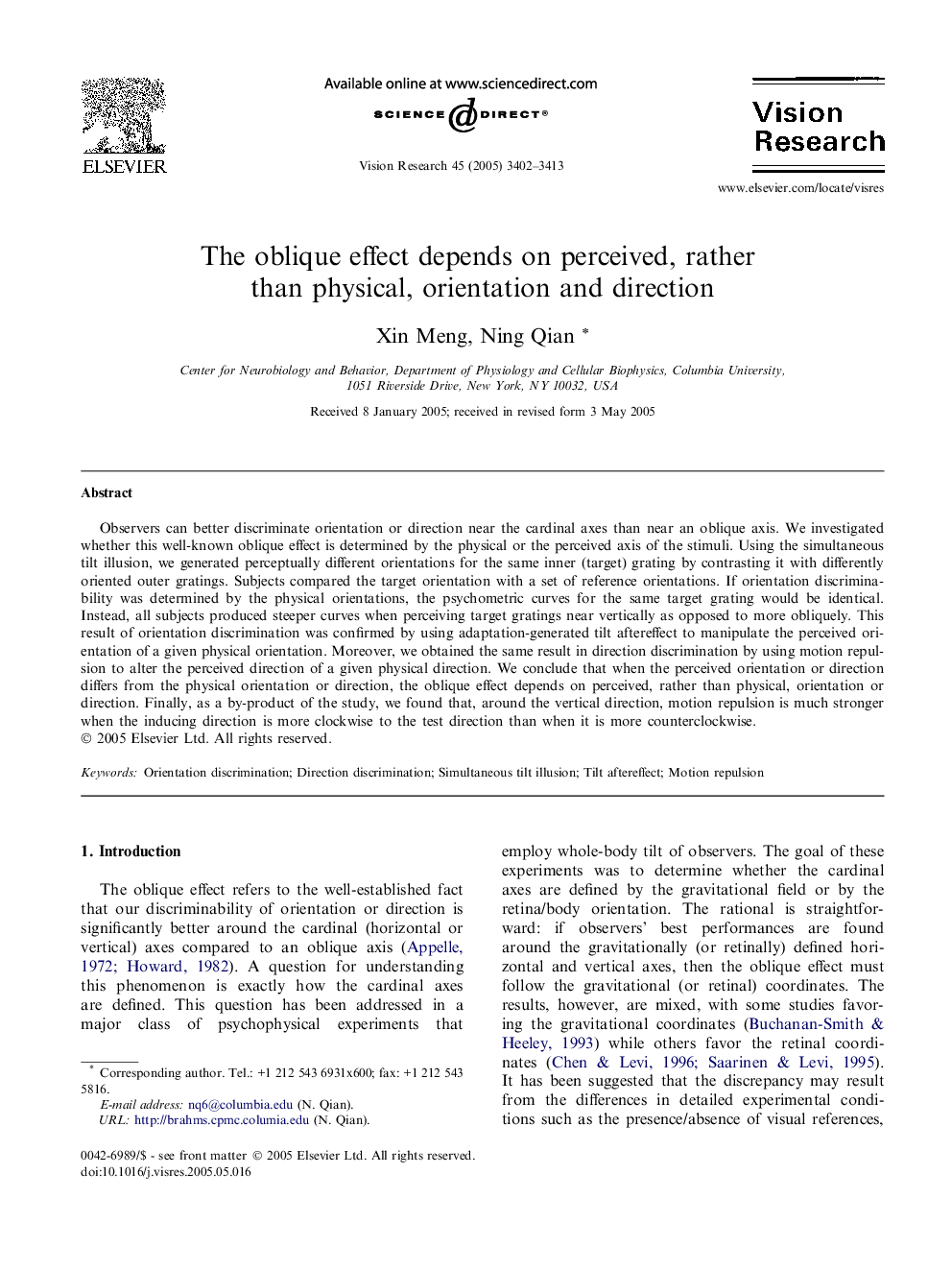| کد مقاله | کد نشریه | سال انتشار | مقاله انگلیسی | نسخه تمام متن |
|---|---|---|---|---|
| 4035471 | 1263528 | 2005 | 12 صفحه PDF | دانلود رایگان |

Observers can better discriminate orientation or direction near the cardinal axes than near an oblique axis. We investigated whether this well-known oblique effect is determined by the physical or the perceived axis of the stimuli. Using the simultaneous tilt illusion, we generated perceptually different orientations for the same inner (target) grating by contrasting it with differently oriented outer gratings. Subjects compared the target orientation with a set of reference orientations. If orientation discriminability was determined by the physical orientations, the psychometric curves for the same target grating would be identical. Instead, all subjects produced steeper curves when perceiving target gratings near vertically as opposed to more obliquely. This result of orientation discrimination was confirmed by using adaptation-generated tilt aftereffect to manipulate the perceived orientation of a given physical orientation. Moreover, we obtained the same result in direction discrimination by using motion repulsion to alter the perceived direction of a given physical direction. We conclude that when the perceived orientation or direction differs from the physical orientation or direction, the oblique effect depends on perceived, rather than physical, orientation or direction. Finally, as a by-product of the study, we found that, around the vertical direction, motion repulsion is much stronger when the inducing direction is more clockwise to the test direction than when it is more counterclockwise.
Journal: Vision Research - Volume 45, Issue 27, December 2005, Pages 3402–3413